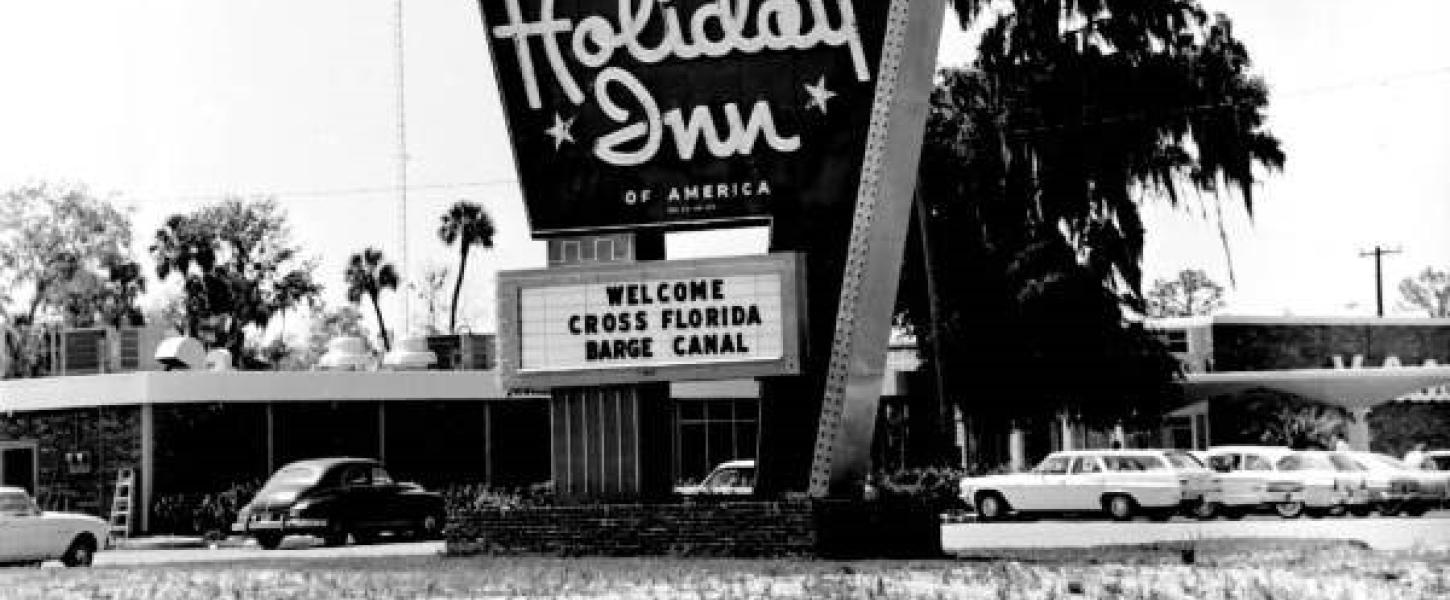History of the Cross Florida Greenway

The Marjorie Harris Carr Cross Florida Greenway follows the path of the abandoned Cross Florida Barge Canal. Despite never being completed, the gargantuan public works project has a long history.
Had it been finished, the Cross Florida Barge Canal would have spanned Central Florida by linking a patchwork of rivers, artificial waterways and lakes. The possibility of crossing Florida through inland waterways was first raised in 1567 by the founder of Spanish St. Augustine, Pedro Menendez de Aviles.
Even in the early days of European colonization, the journey around the cape of Florida was considered treacherous. Pirates, dangerous currents, hurricanes and shallow waters doomed many ships that attempted the lengthy trip.
It was hundreds of years before concrete plans for the canal took shape. In the 19th century, momentum for the canal grew. Business owners and traders supported the canal because it would make it easier to sell and ship goods like timber and cotton between the East Coast and ports on the Gulf of America.
In 1826, John Calhoun and Daniel Webster petitioned Congress to appropriate funds for the first survey of a possible route. Six more studies were funded between 1829 and 1911. They all determined that the canal was a bad idea, or at least too expensive and difficult an undertaking to be worthwhile.
In the 1930s, President Franklin Roosevelt’s New Deal program brought hope for the canal project. The New Deal was a group of programs administered by the federal government that funded and built infrastructure projects. The goal of the New Deal was to stimulate the economy and employ people during the Great Depression, all while building infrastructure and recreational facilities that benefited the public. In fact, nine Florida State Parks were built in the New Deal era by the Civilian Conservation Corps.
New Deal funding for the canal ran out within three years. Local critics insisted that the canal would disrupt Florida’s aquifer and waterways. National opposition grew in response to claims that the project was a waste of taxpayer money and of limited value to people outside of Florida.
But hope for the canal had yet to run out completely. During World War II, German submarines threatened Florida’s coasts and shipping lanes. During World War II, Congress modified the former sea-level canal project into a lock and dam shallow-draft canal along the same route as the original sea-level project. After the war, rivalry between the United States and the Soviet Union intensified. Canal boosters pointed to project as an asset to national security and rehashed old arguments in its favor. Construction resumed in 1964, with President Lyndon B. Johnson presiding at the groundbreaking in Palatka, Florida.
However, the canal was ultimately not to be. Books like Rachel Carson’s Silent Spring prompted a new surge of environmental awareness in the 1960s, and major opposition to the canal emerged. Environmental criticism was strengthened by revived complaints about the canal’s cost and usefulness. Heading a group called the Florida Defenders of the Environment, activist Marjorie Harris Carr appealed to President Richard Nixon and issued legal challenges to construction. Nixon stopped the project in 1971, ending a long-held but never-realized dream. Over the next decade continued legal battles ensued and the political momentum for the project waned. Congress eventually deauthorized the project in 1990.
With the canal only about one-third complete, the land that had been secured for its path sat in limbo. So, what to do with the largest unfinished public works project in history?
Turn it into a greenway!